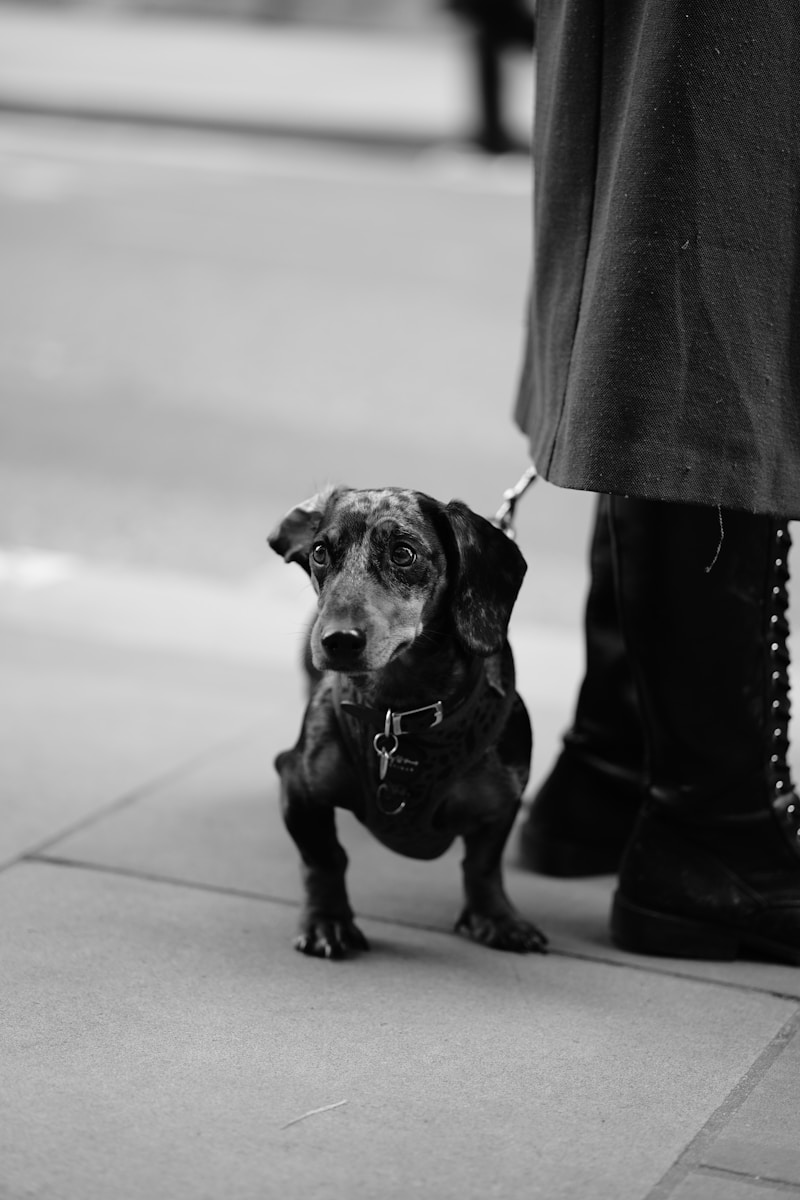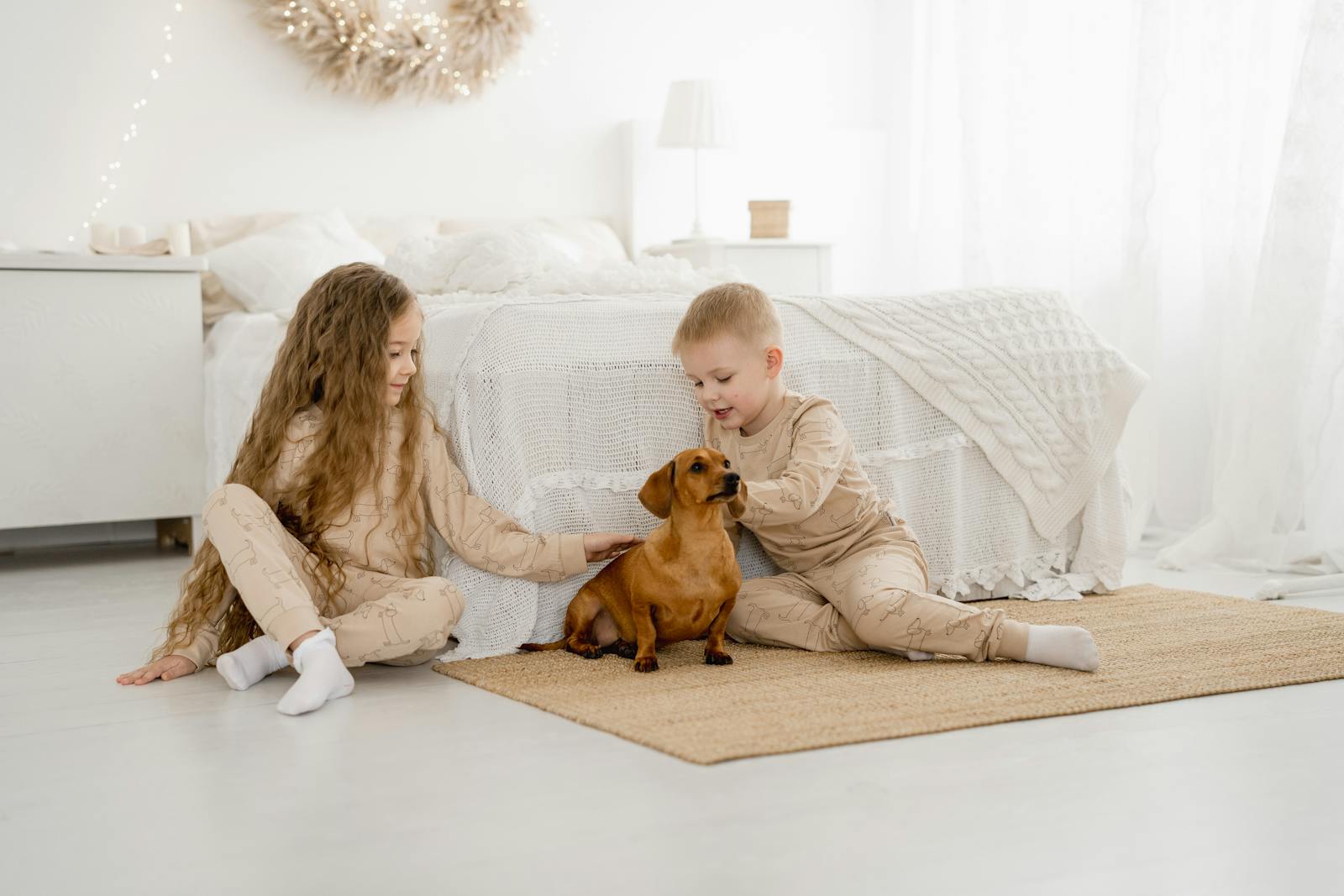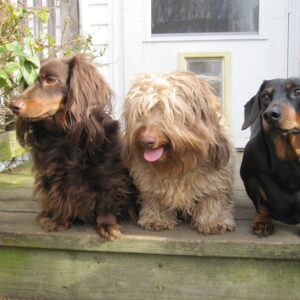Dachshunds and children can form a delightful bond, filled with fun and companionship. These playful dogs, with their long bodies and vibrant personalities, often make excellent companions for kids. Understanding how to foster a positive relationship between dachshunds and children is crucial for creating a harmonious home environment. In this article, we will explore the many benefits of having these adorable dogs with kids, along with practical tips on introductions, safety, and training. By focusing on nurturing this relationship, families can enjoy a rewarding experience that enhances both child development and the well-being of their furry friends.

The benefits of having dachshunds and children together
Having dachshunds and children together can create a wonderful bond that benefits both parties. Here are some key advantages:
- Companionship: Dachshunds are known for their friendly and loving nature. They provide companionship to children, helping them feel less lonely.
- Emotional support: The presence of a dachshund can offer emotional comfort to children, especially during tough times.
- Active lifestyle: Dachshunds encourage children to be more active. Playing with a dog can lead to increased physical activity and outdoor time.
- Teaching responsibility: Caring for a dachshund teaches children valuable lessons about responsibility and empathy.
- Social skills: Interacting with a dachshund can help children develop social skills and improve their ability to communicate.
- Stress relief: Spending time with a dachshund has been shown to reduce stress and anxiety levels in children, promoting a calmer environment.
- Learning about nature: Having a dachshund can spark children’s interest in animals and nature, leading to a greater appreciation for the natural world.
Overall, the bond between dachshunds and children can lead to a happier and healthier home environment, filled with love and joy.
How to introduce dachshunds to your children

Introducing a dachshund to your children can be a joyful experience for the entire family. To ensure a smooth transition, follow these steps:
1. Prepare Your Children
Before bringing the dachshund home, talk to your children about what to expect. Explain:
- How to approach the dog gently.
- The importance of respecting the dog’s space.
- Basic commands they can use to interact with the dog.
2. Create a Calm Environment
When you first introduce the dachshund to your children, make sure the environment is calm. This can help the dog feel more comfortable. Consider:
- Choosing a quiet room for the introduction.
- Limiting loud noises and sudden movements.
3. Supervised Introductions
Always supervise the initial interactions between your children and the dachshund. This ensures safety for both parties. Here’s how:
- Hold the dachshund securely while your children approach.
- Encourage gentle petting and allow the dog to come to them.
4. Positive Reinforcement
Use positive reinforcement to create a bond between your children and the dachshund. Reward both with treats and praise when:
- Your children interact calmly with the dog.
- The dachshund responds positively to your children.
5. Teach Children Responsibilities
Involve your children in caring for the dachshund. This can include:
- Feeding the dog.
- Helping with grooming.
- Taking the dog for walks.
6. Monitor Their Interactions
As your children and the dachshund grow closer, continue to monitor their interactions. Look for signs of:
- Stress in either the dog or the children.
- Positive play behavior.
By following these steps, you can create a harmonious relationship between your dachshund and your children, ensuring that both feel safe and happy.
Safety tips for dachshunds and kids
Ensuring the safety of both dachshunds and children is crucial for a happy home. Here are some essential tips to keep in mind:
- Supervise Interactions: Always supervise playtime between your dachshund and children. This helps prevent any accidental injuries.
- Teach Gentle Touch: Educate your children on how to interact gently with the dachshund. Show them how to pet and hold the dog without being rough.
- Set Boundaries: Create safe spaces for your dachshund where children are not allowed. This gives the dog a retreat when it needs some alone time.
- Watch for Signs of Stress: Be alert to your dachshund’s body language. If the dog shows signs of stress or discomfort, intervene immediately.
- Use Positive Reinforcement: Reward both your dachshund and children for positive interactions. This encourages a loving bond.
- Teach Dog Commands: Train your dachshund to respond to basic commands. This can help manage situations where the dog may feel overwhelmed.
- Keep Toys Separate: Ensure that children’s toys and dog toys are kept separate to avoid confusion and potential choking hazards.
- Regular Vet Check-ups: Keep your dachshund healthy with regular veterinary visits. A healthy dog is less likely to be irritable or anxious.
By following these safety tips, you can create a harmonious environment where both your dachshund and children can thrive together.
Understanding dachshund behavior around children
Understanding how dachshunds behave around children is essential for fostering a positive relationship between them. These small dogs, known for their unique body shape and lively personality, can be great companions for kids when their behavior is understood and managed properly.
Body Language and Signals
Dachshunds communicate through body language. Here are some signs to watch for:
- Tail Wagging: A wagging tail often indicates a happy and excited dog.
- Relaxed Ears: When their ears are relaxed, it shows they are comfortable.
- Growling or Snapping: These are signs of discomfort. It’s important to intervene if you notice these behaviors.
Playful Nature
Dachshunds are known for their playful demeanor. They enjoy engaging with children in various activities. However, it’s crucial to ensure that playtime is safe and supervised. Encourage gentle play to prevent any unintentional roughhousing that could lead to injury.
Protective Instincts
Dachshunds have a natural instinct to protect their family. They may become protective around children, which can sometimes lead to barking or growling at unfamiliar people. Teaching your dog to be calm around guests is important for a harmonious environment.
Socialization is Key
Proper socialization is vital for dachshunds, especially when they are young. Exposing them to various situations, including interactions with children, helps them develop a balanced temperament. Consider arranging playdates with well-behaved children to improve their social skills.
Understanding Their Limits
It’s essential to recognize that dachshunds have their limits. They can become overwhelmed or tired easily. Always provide them with a safe space to retreat when they need a break from the activity. This helps maintain their well-being and keeps interactions positive.
In conclusion, understanding dachshund behavior around children involves recognizing their signals, encouraging safe play, and ensuring proper socialization. With the right approach, dachshunds can thrive in a family environment and create lasting bonds with children.
Fun activities for dachshunds and kids
Engaging in fun activities with your dachshund can create lasting memories for both your kids and your furry friend. Here are some great ideas to enjoy together:
- Outdoor Adventures: Take your dachshund on family walks or hikes. Kids can help lead the way, and dachshunds love to explore new environments.
- Playtime in the Yard: Set up a mini obstacle course in your backyard. Use cones, tunnels, and jumps that both kids and dachshunds can navigate together.
- Fetch Games: Teach your kids how to play fetch with the dachshund. This game is not only fun but also helps to strengthen their bond.
- Hide and Seek: Have the kids hide somewhere in the house or yard while the dachshund tries to find them. This activity stimulates the dachshund’s mind and is exciting for the kids.
- Craft Time: Create homemade toys for your dachshund. Kids can help by decorating old socks or making rope toys, fostering creativity and teamwork.
- Training Sessions: Involve your kids in training sessions. Teaching your dachshund new tricks can be a fun and educational experience for everyone.
- Doggy Playdates: Organize playdates with other family pets. This allows both kids and dachshunds to socialize and burn off energy.
- Story Time: Encourage your kids to read to the dachshund. This can help improve their reading skills while providing comfort to the dog.
These activities not only keep your dachshund active but also promote a strong bond between your children and their four-legged friend. Enjoy the laughter and joy that these moments bring!
Choosing the right dachshund for your family

When selecting a dachshund for your family, it is essential to consider several factors to ensure a good match. Here are some key points to keep in mind:
- Age of the dog: Puppies may require more training and supervision, while older dachshunds might already have established behaviors.
- Temperament: Look for a dachshund with a friendly and calm demeanor, especially if you have young children.
- Size: Dachshunds come in standard and miniature sizes. Consider which size fits best with your family’s lifestyle.
- Energy level: Some dachshunds are more active than others. Choose one that matches your family’s activity level.
- Health considerations: Be aware of any breed-specific health issues, such as back problems, and choose a dog that is in good health.
Additionally, it is wise to meet the dachshund before making a decision. Spend time with the dog to see how it interacts with your family members, especially children. This will help ensure a good fit.
Finally, consider adopting from a shelter or rescue organization. Many dachshunds are looking for loving homes, and you may find the perfect companion for your family!
Training tips for a harmonious dachshund-child relationship
Establishing a strong bond between your dachshund and your children is essential for a happy household. Here are some effective training tips to ensure a harmonious relationship:
- Start Early: Begin training your dachshund as a puppy. Early socialization helps them become comfortable around children.
- Teach Basic Commands: Focus on commands like sit, stay, and leave it. These commands can help manage interactions between your dog and kids.
- Positive Reinforcement: Use treats and praise to reward your dachshund for good behavior around children. This encourages them to repeat those behaviors.
- Involve the Kids: Let your children participate in training sessions. This builds their confidence and strengthens their bond with the dachshund.
- Set Boundaries: Teach your dachshund what is acceptable behavior around kids. For example, jumping or barking can be discouraged with consistent training.
- Supervised Interactions: Always supervise the interactions between your dachshund and children. This ensures safety and helps you correct any undesirable behavior immediately.
- Teach Respect: Educate your children on how to approach and handle the dachshund gently. They should know to respect the dog’s space and not disturb them while eating or sleeping.
- Regular Exercise: Ensure your dachshund gets enough physical activity. A well-exercised dog is less likely to exhibit behavioral issues.
- Be Patient: Training takes time. Be patient with both your dachshund and your children as they learn to interact positively.
By following these training tips, you can foster a loving and respectful relationship between your dachshund and children, ensuring a joyful environment for everyone.
Common misconceptions about dachshunds and children
Many people have misconceptions about dachshunds and their interactions with children. It’s essential to address these myths to foster a better understanding of these lovable dogs. Here are some common misconceptions:
- Dachshunds are aggressive towards children: This is a widespread myth. In reality, dachshunds can be very friendly and affectionate with children when properly socialized.
- All dachshunds are good with kids: While many dachshunds are great companions, individual temperament varies. Not every dachshund will naturally get along with children.
- Dachshunds cannot be trained: Some believe that dachshunds are stubborn and untrainable. However, with consistent training and positive reinforcement, they can learn commands and good behavior.
- Dachshunds are too small to play with children: Although dachshunds are small, they are quite energetic and enjoy playtime. They can engage in fun activities with kids, as long as it’s done safely.
- Dachshunds are not suitable for families: This is a misconception. Many families find dachshunds to be loving and loyal companions, making them a great addition to family life.
Understanding these misconceptions can help create a positive environment for both dachshunds and children. Building a strong bond between them requires knowledge and patience.
Creating a safe environment for dachshunds and kids
Creating a safe environment for both dachshunds and children is essential for fostering a harmonious relationship. Here are some key points to consider:
- Designate Safe Spaces: Ensure that both your dachshund and children have their own safe spaces. This could be a cozy corner for the dog and a play area for the kids.
- Supervision is Key: Always supervise interactions between your dachshund and children. This helps prevent any accidental rough play or misunderstandings.
- Teach Boundaries: Educate your children on how to approach and interact with the dachshund. Teach them to respect the dog’s space and not disturb it while eating or sleeping.
- Child-Proof Your Home: Remove any hazards that could harm either the dog or the children. This includes small toys that could be swallowed or items that could be chewed on.
- Secure the Environment: Make sure your yard is fenced and secure, preventing your dachshund from escaping and keeping children safe from wandering away.
- Use Baby Gates: Consider using baby gates to separate areas when you cannot supervise directly. This allows the dog and kids to have their own space when needed.
- Provide Proper Training: Training your dachshund to follow basic commands can help manage their behavior around children. Commands like “sit,” “stay,” and “leave it” can be very useful.
- Regular Health Check-ups: Ensure your dachshund is healthy and up to date on vaccinations. A healthy dog is less likely to exhibit behavioral issues.
By implementing these strategies, you can create a safe and nurturing environment where both dachshunds and children can thrive together.
The role of dachshunds in child development
Dachshunds can play a significant role in child development. Their unique characteristics and affectionate nature contribute to various aspects of a child’s growth. Here are some key points to consider:
- Emotional Support: Dachshunds provide unconditional love and companionship, helping children develop emotional resilience.
- Social Skills: Interacting with a dachshund can enhance a child’s communication skills and ability to empathize with others.
- Responsibility: Caring for a dachshund teaches children the importance of responsibility, as they learn to feed, groom, and play with their pet.
- Physical Activity: Playing with a dachshund encourages children to be more active, promoting physical health and fitness.
- Confidence Building: Successfully training or teaching a dachshund new tricks can boost a child’s self-esteem and confidence.
In summary, dachshunds can positively influence a child’s development by fostering emotional growth, social skills, responsibility, physical activity, and confidence. These dogs are more than just pets; they are valuable companions that contribute to a child’s overall well-being.




